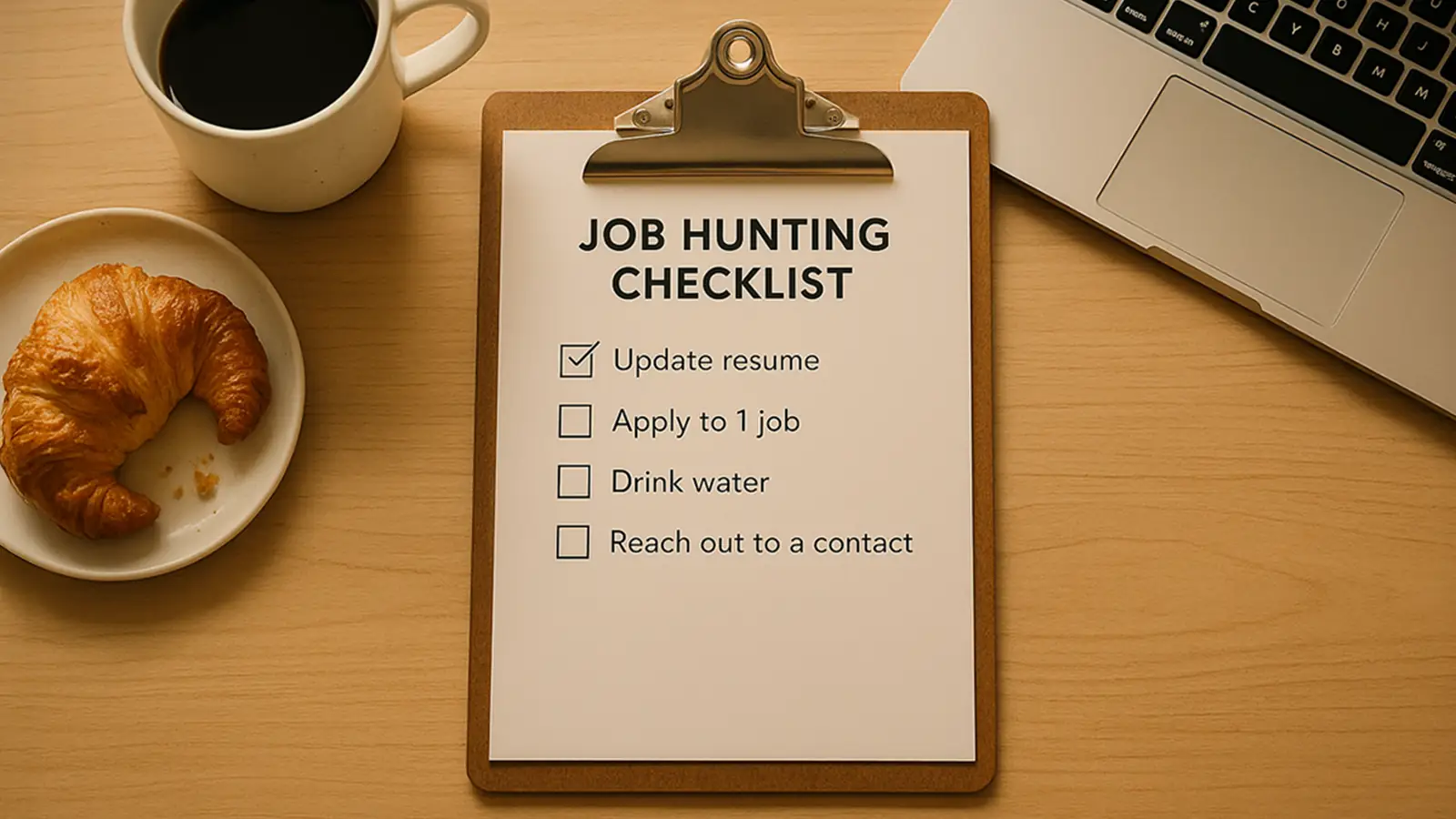Job Hunting while Neurodivergent - Part 5 of 5

Read Part 1 here | Read Part 2 here | Read Part 3 here | Read Part 4 here
Stepping Into the Unknown—With a Plan
As I'm writing this, it's a Friday. Another week gone, trying to figure out which direction to move in.
Losing a job can rattle your sense of direction. Of course it will—but this isn’t the end. It’s a plot twist. And plot twists... ? That’s where growth sneaks in.
For neurodivergent individuals, rebuilding after a job loss isn’t just about dusting yourself off—it means navigating barriers like executive dysfunction, decision fatigue, and uncertainty about what kind of future even makes sense. But this chapter isn’t just about survival.
It’s about shaping what comes next—with confidence and intention.
Rebuilding Confidence After Job Loss
As I look back at my career(s), I ponder, what have I actually done? Yet when people ask me, they're always shocked at my many accomplishments! For me, they just fade into the mist of my past- to others they stand out at peaks of triumph. I bet this is true for many of you.
Something to remember, "confidence" isn’t a personality trait; it’s a byproduct of clarity. When you can name your strengths, track your wins, and choose direction over drift—confidence builds.
1. Acknowledge Your Accomplishments
- List out past achievements, no matter how small, to remind yourself of your capabilities.
- Ask former colleagues or mentors for feedback on what you did well in previous roles.
Actionable Tip: Keep a “confidence journal” with positive feedback, wins, and skills you’ve developed over time.
2. Reframe Job Loss as a Learning Experience
- Instead of seeing unemployment as failure, recognize it as a pivot point.
- Identify what worked and what didn’t in your past roles to better align with future opportunities.
Actionable Tip: Write a brief reflection on lessons learned from your last job, and how they’ll shape your next move.
3. Use Small Wins to Build Momentum
- Confidence grows through action. Start with small, manageable tasks (e.g., updating your LinkedIn profile, reaching out to one connection).
- The more you engage in the job search process, the more natural and less intimidating it will feel.
Actionable Tip: Create a daily or weekly checklist of job search tasks to track progress and celebrate small victories.
Sharpening Your Strategy
Go Where You’re Valued
Stop applying everywhere. Start applying where your brain thrives. Seek environments that get you—or want to.
Use This: Platforms like Inclusively or Neurodiversity in the Workplace spotlight companies already making space for neurodivergent talent.
Personalize, Don’t Overextend
Mass applying is exhausting and demoralizing. Instead, keep a master resume and cover letter, and tailor just the top section for each application.
AI Tip: Ask ChatGPT: "Rewrite this summary to emphasize my attention to detail and problem-solving for a remote analyst role."
Network on Your Terms
No cold calls? No problem.
Thoughtful DMs, blog comments, or small group meetups all count. You don’t need volume. You need alignment.
Action Prompt: Reach out to 3 professionals this week. Start with: *"Hi [Name], I really appreciated your post on [topic]..."
Creating a Long-Term Career Vision
1. Define What You Actually Want
Workplace with low noise? Projects with deep focus? Leadership that communicates clearly? Put those on your list.

Prompt: Ask yourself: What’s the worst part of my last job? What’s the opposite of that? Where do I want to be in 1 year? 3... 5 years?
2. Keep Building (But Lightly)
Skill-building doesn’t have to mean a 12-week bootcamp. One short course on Coursera or one AI tutorial on YouTube per month = progress.
Microlearning Tip: Schedule 20 minutes on Sunday to explore a new tool, platform, or idea that aligns with your dream role.

3. Make Your Work Work For You
Remote work. Asynchronous teams. Job-sharing. Contracting. These aren’t backup plans—they're real, valid paths. You don’t have to shape yourself to the workforce. You get to shape the work.

Reflection Prompt: List 3 things you need to do your best work. Use it as your non-negotiables checklist during job search.
Actionable Tip: Create a list of workplace needs (e.g., minimal meetings, clear instructions, deadline flexibility) to help you evaluate job fit.
Restarting Your Life Differently.

Your brain doesn’t need fixing. Your path doesn’t need to follow a straight line. You are allowed to find work that fits who you are now—not who you were when you started. And if you’re still figuring that out? Good. That’s what this chapter is for.
This isn’t a story about bouncing back. It’s about moving forward. On your terms.
Earlier Parts of the Series
Part 1 of 5: Understanding the Challenges of Job Loss for Neurodivergent Individuals – Lost & Found
Losing a job can be a uniquely difficult experience, especially for neurodivergent individuals. The uncertainty, emotional toll, and financial instability create overwhelming stress. Read more here
Part 2 of 5: Leveraging Your Neurodivergent Strengths in the Job Market – From Surviving to Thriving
Your neurodivergence is not a weakness—it’s a strength. Learn how to identify your unique skills, find job opportunities that align with your strengths, and advocate for yourself in the hiring process. Read more here
Part 3 of 5: Structuring Your Job Search for Success – Building a Path Forward
A well-structured job search can help reduce stress, increase productivity, and make the process more manageable. Learn how to set realistic goals, stay organized, and maintain energy throughout the process. Read more here
Part 4 of 5: Navigating Financial Uncertainty During Unemployment – Stability in the Storm
Financial uncertainty can feel overwhelming, but with the right strategies, you can maintain stability and move forward. Explore budgeting techniques, assistance programs, and mental well-being strategies. Read more here
Disclaimer: As ALWAYS, this article is for educational and motivational purposes and is not financial advice. Always consider consulting with a financial professional for guidance tailored to your unique situation.




